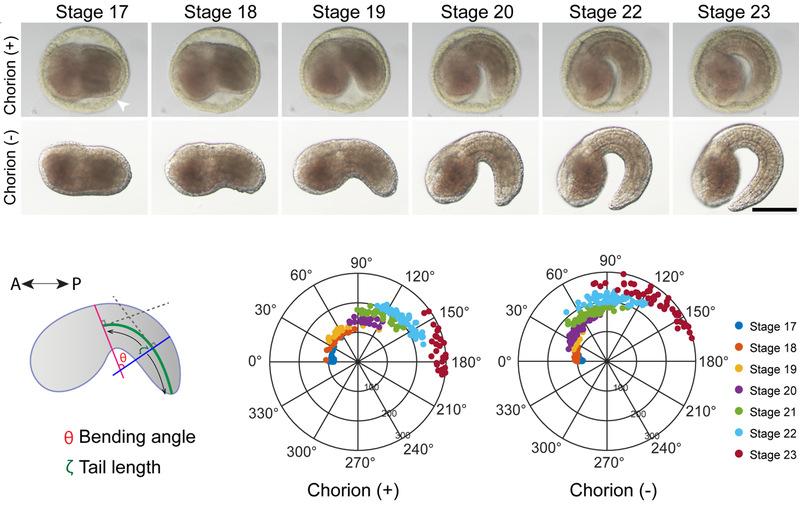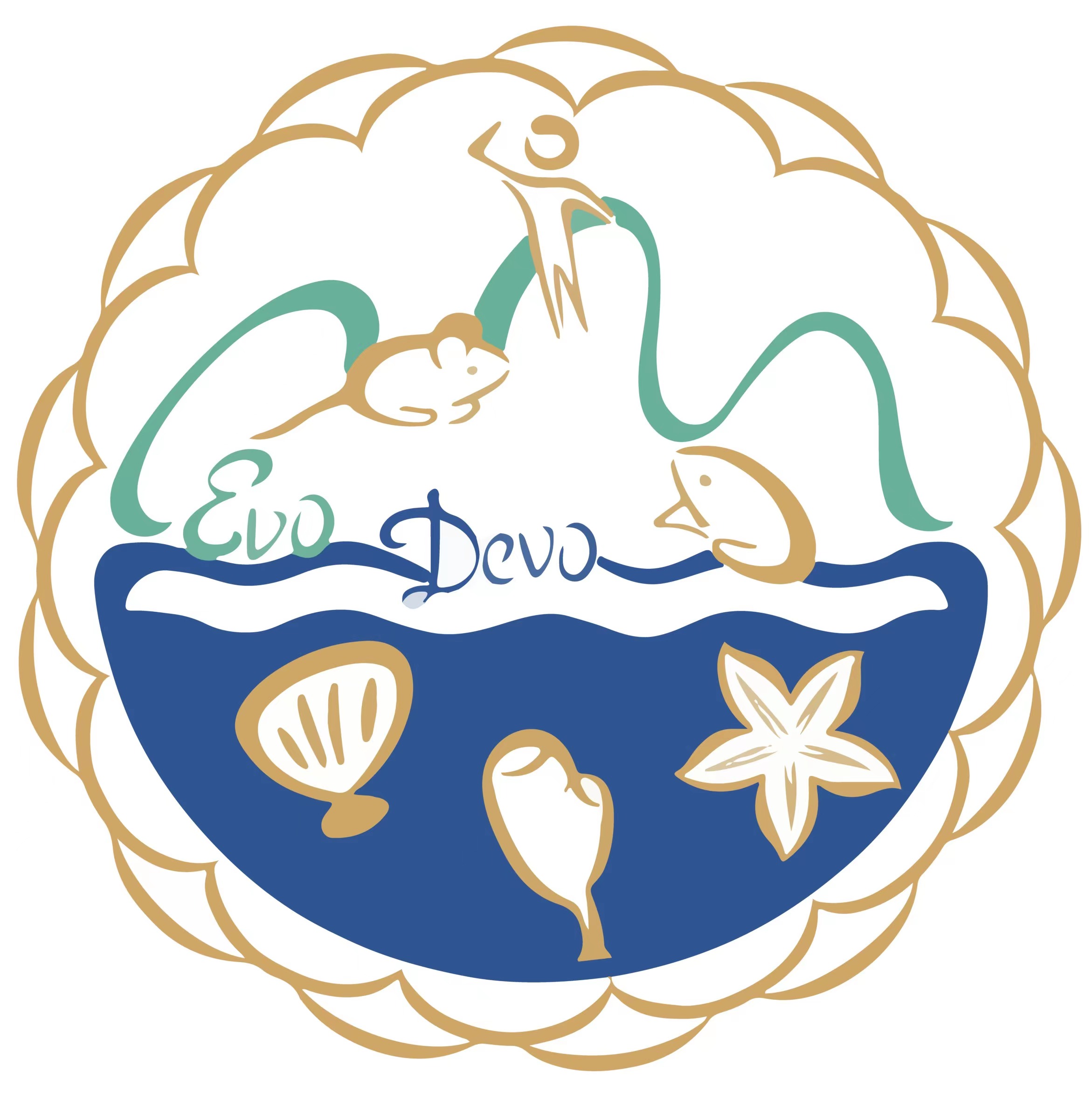How to bend your tail: insights from Ciona
Professor Dong Bo’s team from the Sars-Fang Centre of Ocean University of China recently published an article named Ciona embryonic tail bending is driven by asymmetrical notochord contractility and coordinated by epithelial proliferation in the authoritative biology journal Development.
Issue bending is a key part of the animal morphogenetic toolkit that can happen at different scales, from small invaginations to larger embryo-level deformations. An example of the latter is the ventral folding of the tail that occurs in numerous animal embryos. However, the mechanisms underlying tail bending are still incompletely understood; one idea is that bending is passive, a result of confinement of the embryo within the chorion. Now, Bo Dong and colleagues use the simple chordate Ciona as a model system to investigate these problems. They first show that bending is in fact an active process: it still occurs in dechorionated embryos, and is autonomous to the tail. Active actomyosin is enriched ventrally in the notochord and, as tested both pharmacologically and genetically, required for bending. In the overlying epidermis, proliferation is higher in dorsal compared to ventral sides, and inhibition of proliferation leads to a failure in bending. Atomic force microscope measurements reveal that notochord is the stiffest tissue in the tail, and the authors then built a mathematical model to test the relative contributions of each tissue: this modelling suggests that ventral constriction of the notochord is sufficient to drive bending. Thus, tail bending is an autonomous morphogenetic process driven by asymmetric cell behaviours.

The active bending process of ascidian embryo tail
The project was completed by Professor Dong Bo's team and Professor Feng Xiqiao's team from Tsinghua University. Professor Feng's team is responsible for the construction and simulation of the physical model. Dr. Qiongxuan Lu from Ocean University of China and Yuan Gao, a doctoral student at Tsinghua University, are the co-first authors of the above paper, and Professor Dong Bo is the corresponding author of the paper. Other members of the Dong Bo team participated in the project research work. The above work was funded by Pilot National Laboratory for Marine Science and Technology(Qingdao), National Key R&D Program of China, the National Natural Science Foundation of China.
The paper link:https://dev.biologists.org/content/147/24/dev185868
Highlights introduction:https://dev.biologists.org/content/147/24/e2404
The author interview:https://dev.biologists.org/content/147/24/dev199042


 English
English 中文
中文

